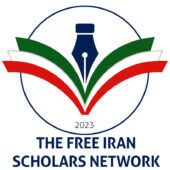Author: Matthew Tasooji
Affiliation: Professor, CSUSM
Keywords: Iran, brain drain, migration, education, economic development, public policy, emigration
Abstract
While Iran’s persistent economic turmoil, rooted in mismanagement, corruption, and systemic opacity, is well-documented, a less visible yet profoundly damaging crisis is quietly eroding the nation’s potential from within: the large-scale emigration of its educated population. This “brain drain” is not only depleting the country’s intellectual capital but also severely hindering its long-term development, particularly in critical sectors like healthcare, education, and innovation. This paper explores the causes, consequences, and implications of Iran’s brain drain, situating it within the broader context of the Islamic Republic’s ideological and economic policy priorities.
Introduction
Iran, a nation rich in natural and human resources, faces a profound contradiction: while its reservoirs of oil and gas remain vast, its most valuable resource—its educated citizenry—is steadily leaving. The crisis of human capital flight, or “brain drain,” is emerging as one of the most pressing strategic failures of the Islamic Republic. This article argues that the ongoing exodus of talent is not an incidental byproduct of economic hardship but a predictable outcome of long-standing policy choices that have consistently deprioritized knowledge, innovation, and civil liberties.
The Historical and Ideological Roots of Brain Drain
The Islamic Republic’s indifference—if not hostility—toward intellectual capital dates back to its inception. In a 1980 speech, Ayatollah Khomeini dismissed the exodus of educated professionals by declaring:
“Let these decayed brains flee… They were not scientific brains… Iran is not a place for them to live anymore… Let them flee.”
This sentiment captured an enduring ideological stance: suspicion toward educated elites, intellectual independence, and technocratic governance. That posture has since translated into regressive policies that have driven generations of Iran’s brightest minds abroad.
Quantifying the Exodus
The scale of Iran’s brain drain is staggering:
- Demographic Impact: According to Stanford University research, while Iran’s population more than doubled from 1979 to 2019, the share of emigrants—largely educated—tripled in the same period.
- Talent Migration Intentions: Gallup’s 2015–2017 Potential Net Migration Index revealed that over one-quarter of highly educated Iranians would emigrate if possible.
- Innovation Loss: Between 2007 and 2012, 96% of patents registered by Iranian-born inventors were filed from outside Iran (Economist, 2013). In comparison, this number for China was only 17%.
- Healthcare Exodus: An estimated 3,000 healthcare professionals left Iran in 2023 alone.
Even among the most talented youth, departure is the norm: by 2013, none of the top ten scorers on the 2007 national university entrance exam remained in Iran.
Systemic Drivers of Brain Drain
Several structural factors underlie this trend:
- Policy Priorities: The Iranian state has heavily favored military, nuclear, and security expenditures over education or research. In 2023, funding for the IRGC increased by 200%, while higher education received only a nominal 13% rise—effectively a budget cut amid 50% inflation.
- Labor Market Dysfunction: Official data estimate 11 million Iranians unemployed. Over 40% of college graduates—particularly women—are jobless. Of 270,000 annual university graduates, only 75,000 find employment.
- Restricted Freedoms: Beyond economic factors, professionals cite restrictions on freedom of speech, academic independence, and career development as primary reasons for emigration.
Economic Consequences
In 2014, then-Science Minister Reza Faraji Dana estimated the cost of brain drain at $150 billion annually—significantly exceeding Iran’s total oil revenue that year (under $20 billion). A more conservative World Bank estimate places the cost at $50 billion annually.
Iranian expatriates are overwhelmingly high-achieving: 60% of Iranians living in the USA hold a bachelor’s degree or higher; over 30% have graduate or professional degrees. Similarly, nearly half of Iranian asylum seekers in Germany had university education (German Federal Office for Migration and Refugees, 2018).
Conclusion: A Strategic and Moral Failure
Iran’s brain drain is not merely a demographic trend; it is a policy failure with long-term strategic consequences. A nation that systematically alienates its intellectuals—through repression, economic exclusion, and ideological rigidity—cannot hope to achieve sustained development.
The loss is not only monetary or measurable in patents or publications. It is a loss of human potential, national dignity, and future leadership. For a country with some of the richest natural and cultural heritages in the world, it is a crisis of priorities—and one that cannot be reversed without fundamental political and structural change.
References
- Khomeini, Ayatollah Ruhollah. Speech, October 31, 1980.
- Stanford Iran 2040 Project. (2020). Emigration Trends in Iran.
- Gallup. (2017). Potential Net Migration Index.
- The Economist. (2013). Patent Trends among Diaspora Scientists.
- Amnesty International Reports. (2019–2024).
- German Federal Office for Migration and Refugees. (2018). Iranian Asylum Seekers in Germany.
- World Bank. (2021). Human Capital Flight Estimates.
